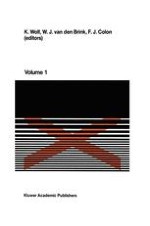
1988 | OriginalPaper | Chapter
Use of Fluorescing Agents to Study Actual and Apparent Petroleum Thicknesses in Laboratory Columns
Author : Jack D. Milligan
Published in: Contaminated Soil ’88
Publisher: Springer Netherlands
Included in: Professional Book Archive
Activate our intelligent search to find suitable subject content or patents.
Select sections of text to find matching patents with Artificial Intelligence. powered by
Select sections of text to find additional relevant content using AI-assisted search. powered by
The presence and thickness of petroleum products in groundwater monitoring wells has been used to delineate areas of contamination and to estimate the volume of contaminant by nearly everyone involved with the cleanup of petroleum-contaminated groundwater. However, as long ago as 1967 when J. Van Dam1 theorized on the migration of hydrocarbons in groundwater, it has been suspected that petroleum thickness in monitoring wells (“apparent” thickness) was not representative of the “actual” thickness on the water table. The existence of the water-bearing capillary fringe that occurs at the surface of the groundwater table was postulated by Williams and Wilder2 to effectuate the discrepancy between “actual” and “apparent” petroleum thickness in their 1971 case study. More current publications by Yaniga and Warburton3, and Blake and Hall4 have helped make the capillary fringe’s effect on apparent petroleum thickness a generally accepted phenomena. However, visual proof concomitant with quantitative information has heretofore been very sparce or nonexistent.